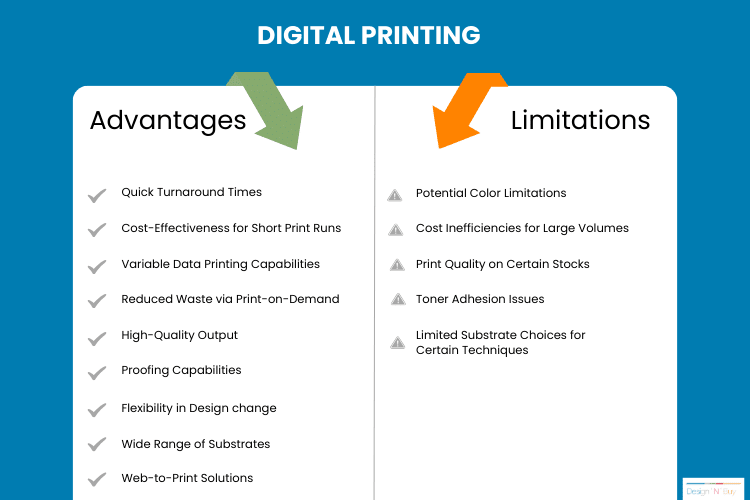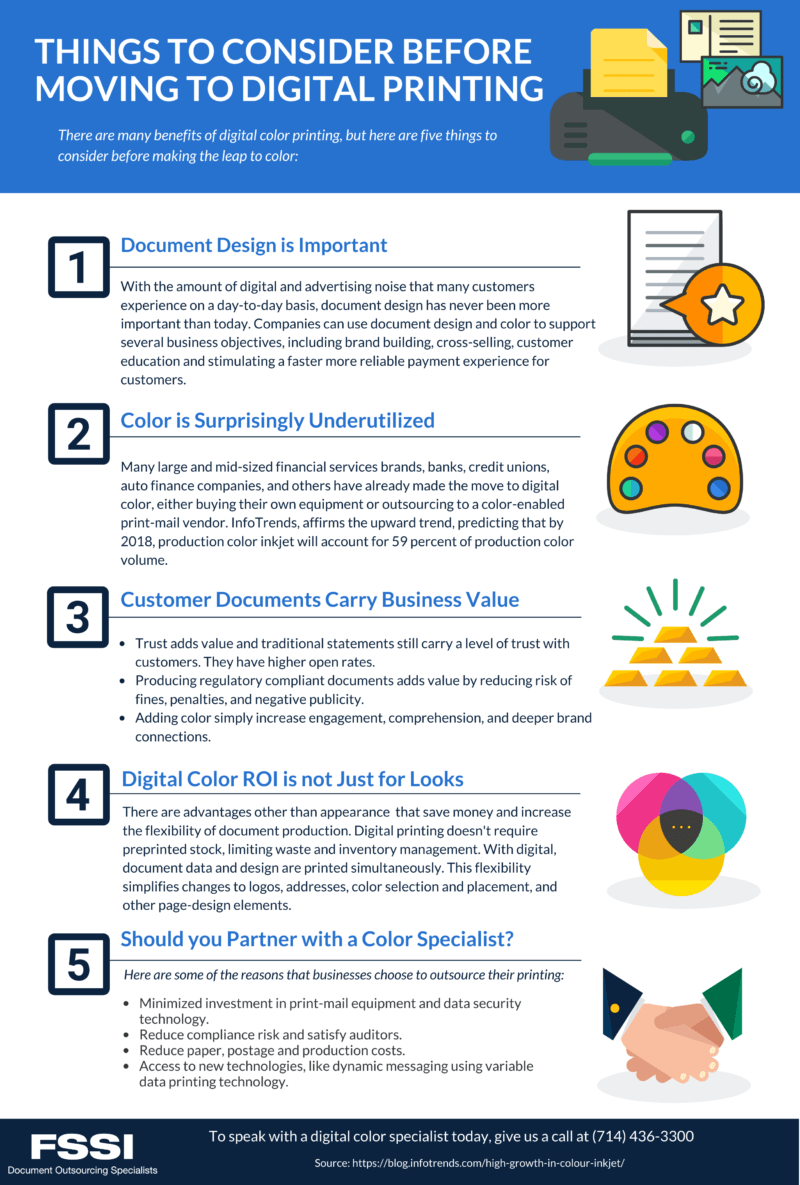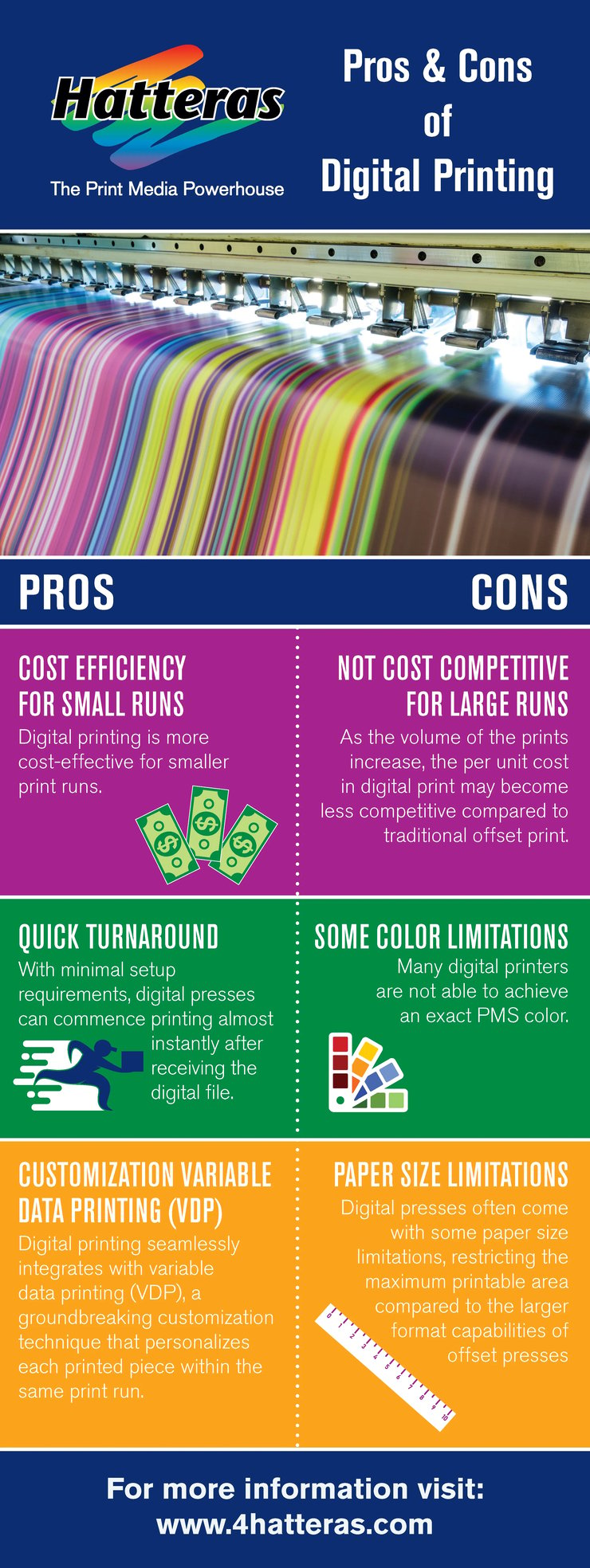All about Digital Printing
Table of ContentsThings about Digital PrintingExcitement About Digital PrintingExcitement About Digital PrintingLittle Known Facts About Digital Printing.6 Simple Techniques For Digital PrintingHow Digital Printing can Save You Time, Stress, and Money.
Variable data printing, such as direct mail with individualized codes and addresses, is preferably fit for electronic printing. Digital fast printing only requires 4 steps of layout, testimonial, printing and binding to get everything done. Digital quick printing has an exceptional benefit: print on need.According to PMMI, digital printing enables brand names and suppliers to respond quickly to customer needs while boosting the supply chain, reducing warehousing cost and waste, and enjoying faster time to market. That all audios wonderful, but exactly how does this technology do all that? The significant differentiator of these modern technologies is that there are no set-up charges and no plates with digital printing.
Some Known Facts About Digital Printing.
According to Wikipedia, the best difference in between electronic printing and standard approaches such as lithography, flexography, gravure, or letterpress - Digital Printing is that there is no requirement to replace printing plates in digital printing, whereas in these analog printing methods home plates are repeatedly replaced. This results in quicker turn-around time and reduces expense when making use of digital printing.
Digital printing is extremely adaptable, so it's simple to make changes to the plan design rapidly. It all goes back to the plates.
With conventional printing approaches, short-run printing is simply not possible. Because a fantastic style can make or break your item, electronic printing regularly creates premium, clear and vivid graphics each time.
Digital printing is the process of printing digital-based pictures straight onto a variety of media substratums. There is no requirement for a printing plate, unlike with balanced out printing. Digital documents such as PDFs or desktop computer posting files can be sent straight to the digital printing machine to publish on paper, photo paper, canvas, material, synthetics, cardstock and various other substratums.
Some Known Questions About Digital Printing.
According to PMMI, electronic printing enables brand names and suppliers to react rapidly to consumer needs while enhancing the supply chain, reducing warehousing cost and waste, and delighting in faster time to moved here market. That all noises terrific, but exactly how does this technology do all that? The major differentiator of these modern technologies is that there are no set up charges and no plates with look at here electronic printing.
According to Wikipedia, the best distinction between digital printing and standard techniques such as lithography, flexography, gravure, or letterpress is that there is no requirement to change printing plates in digital printing, whereas in these analog printing approaches the plates are continuously replaced. This results in quicker turn-around time and decreases cost when using electronic printing.

What Does Digital Printing Mean?
More inventory can suggest more waste down the roadway. With standard printing approaches, short-run printing is just not feasible. Since a terrific layout can make or break your product, digital printing continually creates top notch, clear and vibrant graphics each time. Digital printing on adaptable pouches adds the intense, lively, and precise graphics that almost bid consumers to connect and touch them.

According to PMMI, electronic printing allows brands and manufacturers to react promptly to customer needs while enhancing the supply chain, lowering warehousing cost and waste, and enjoying faster time to market. That all noises fantastic, however look at more info just how does this technology do all that? The significant differentiator of these modern technologies is that there are no set up charges and no plates with electronic printing.
Digital Printing Things To Know Before You Get This
According to Wikipedia, the best distinction between digital printing and traditional techniques such as lithography, flexography, gravure, or letterpress is that there is no demand to change printing plates in electronic printing, whereas in these analog printing approaches home plates are repeatedly replaced. This causes quicker turn-around time and lowers expense when utilizing digital printing.
Digital printing is extremely adaptable, so it's simple to make changes to the plan layout swiftly. It all goes back to the plates.

Get This Report about Digital Printing
Digital printing is the procedure of printing digital-based pictures directly onto a selection of media substrates. There is no requirement for a printing plate, unlike with offset printing. Digital documents such as PDFs or desktop computer publishing documents can be sent out straight to the digital printing machine to publish on paper, picture paper, canvas, fabric, synthetics, cardstock and various other substrates.